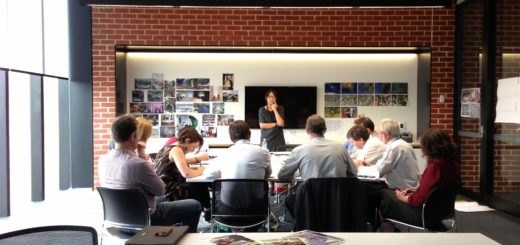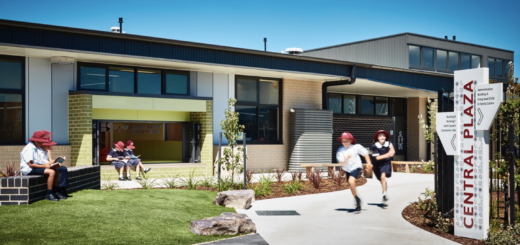Designing in tandem: research, practice and policy in new spaces and places for learning

In this guest post Matthew Esterman provides his perspective on connections between changing expectations, policies and practice…
Miss Animah is in her third year of teaching. Sitting in the staff lounge, she is the epitome of a modern early career teacher: keen, tech-savvy, highly qualified and willing to engage her students with the best learning opportunities she can muster. Miss Animah scours social media and professional journals for new ideas on a weekly basis, takes part in professional development on all areas of teaching, learning, assessment, curriculum, even a dedicated coaching program to further grow her professional capabilities and confidence.
However, despite the wonderful displays of learning in her classroom, despite her utter professionalism at every moment of the day, despite her deeply empathetic approach to her students, her room is still arranged with her desk at the front, her students’ desks in rows sitting facing her, their beaming faces seeming to absorb her every word as she teaches.
She is doing nothing wrong. In fact, she’s been trained for this exact scenario. Years of time, decades of research and expertise, hundreds of thousands of dollars, have gone into her growth as a teacher and yet…
And yet we know that this model of schooling produces students who are highly compliant, increasingly disengaged and less creative and independent by the time they reach the pressures of end-of-school courses like the NSW Higher School Certificate or the Victorian Certificate of Education. It is geared towards more students entering higher levels of study (mainly at TAFE and universities) for longer, and pushes more to be highly qualified in order to better enter the workforce.
But this is founded on assumptions that are no longer true. Going to university does not guarantee a job after graduation. Getting a job no longer guarantees that position for life or the better part of it.
I’m not talking about Trump-esque ‘alternative facts’. I’m talking about the fact that through a mixture of rapid automation, attempts to rationalise the human experience of learning to a reduced set of competencies or measurable goals, and vastly increased global competition, the guarantees of previous generations simply to not exist for our school aged children today.
Therefore it is critical to understand that school is no longer preparation for life but is part of life. It is a place where young people can, with a measure of safety and appropriate support, delve into new worlds of learning and grow their skills and confidence in order to have agency in the world whilst they are still at school.
In part, this can be achieved by a concerted effort to rethink and redesign schools as we know them. This will not be only driven by research or by “innovation” alone, but a partnership between the two. A true dialogue between the evidence at hand and the practice at the coalface. A recognition and respect between the worlds of academia and the profession. A team-based approach to testing, trialing and failing at new approaches to learning and teaching that make sense in a world where content is just a thumbs’ press away.
It was clear at Talking Spaces 7, a conference held by the Learning Environments Applied Research Network (LEaRN) at the University of Melbourne, that this effort is currently underway and starting to make an impact on the thinking of policy makers, practitioners and researchers themselves.
We have an opportunity to redesign many new schools in Australia to not only be a connected network of lighthouses for other schools in their area, or their sector, or their state, but also to the world. This opportunity will not last long and is not something to be measured in 12 or 24 months. It will take a true collaboration between designers, practitioners, leaders and researchers to make sure that we create places for learning that are still seen as relevant in 20 years, not just two.
Miss Animah cannot be thrown into a new space without support and resources, time to experiment and grow. It will take vision, foresight, true stakeholder engagement, leadership from within and above, and the willingness to establish that dialogue between research, practice and policy that needs a longer attention span than a news cycle.
Matt Esterman is a Consultant with SpaceLogic / WorkCollectiv / SixIdeas
matt.esterman@six-ideas.com ![]() @mesterman
@mesterman



